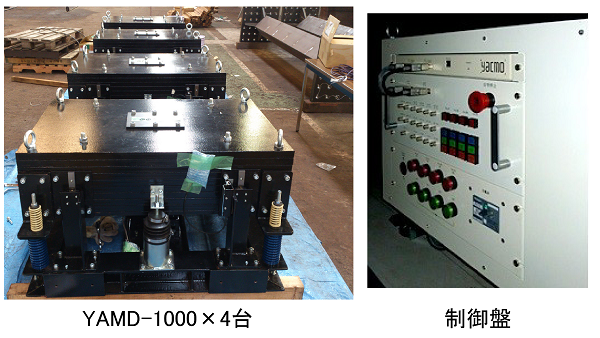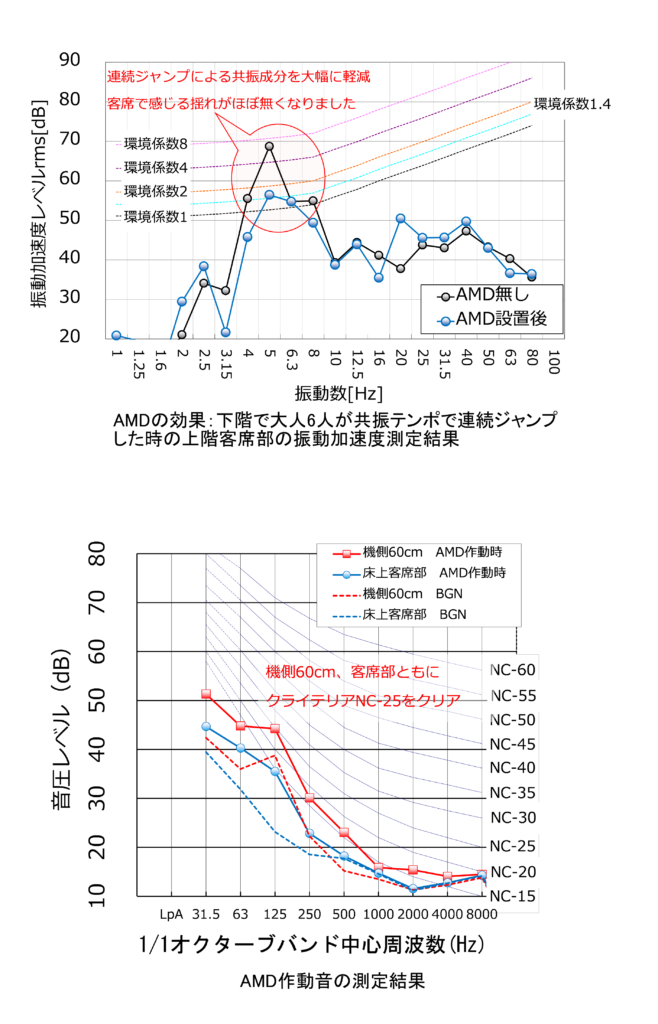Vibration problems with fitness and verticals on different floors?

This is an example of vibration control for floor shaking caused by fitness and other multi-person exercise. Yacmo's AMD can control multiple units simultaneously and has a large output! Yacmo's AMDs have a proven track record in preventing vibrations caused by exercise by a large number of people. The AMDs are also equipped with linear motors to reduce operating noise and can be used in theater seating areas (e.g., under the floor).
issue
A certain theater is a facility where performing arts productions such as plays, musicals, and dances are staged, with halls and multipurpose studios laid out over several floors.
At one point, during the performance of a play, there was a problem with the audience feeling shaking in the seats (earthquake? Some audience members seemed to be feeling it). The source of the shaking was a multi-person dance being performed in a different performance in the downstairs studio.
This was due to the fact that the building had a long-span structure and the natural frequency of the floor was low at approximately 5 Hz, making it susceptible to resonance and the transmission of vibrations during dance and other physical activities. It is generally known that when a large number of people move up and down to a certain rhythm, and that rhythm matches the natural frequency of the floor or other structure, a resonance phenomenon occurs, causing more shaking than expected. In this case, it is thought that the conditions were such that such a resonance phenomenon was likely to occur.
The key points to consider when taking action are...
- Since the countermeasures were taken after construction was completed, it was not possible to make structural design changes, etc. → Countermeasures were taken with vibration-damping devices such as TMD and AMD → Installation was in the space under the audience seating floor.
- To counteract the excitation force of multi-person motion → a commensurate output is required.
- Quietness in the theater must be ensured; AMD operating noise must not affect the theater-going experience. The design criterion for the noise level was NC-25 (NC-25 is a specification that requires recording studio level quietness).
counter-measure
Since it was assumed that the system would need to handle large excitation force due to the movement of a large number of people, we designed an AMD system capable of simultaneously controlling four AMDs. A linear motor-driven 1-ton AMD (YAMD-1000) was selected, and a soundproofing cover was installed as an option to reduce operating noise. We have many years of expertise in soundproofing.

result
After installation of AMD, a vibration test was actually conducted with multiple people (6 people). Simultaneous jumps were made at a tempo that would cause resonance, AMD was turned on and off, and vibration measurements were taken in the seating area, and it was confirmed that the vibration was reduced by approximately 10 dB in the seating area and that the shaking felt by the body was also greatly reduced. In addition, when sitting in the auditorium, the operation noise was almost imperceptible and cleared the noise criterion (NC-25) in the studio.

Related Pages
- added. This report compares AMD (Active Mass Damper) and TMD (Tuned Mass Damper), which are commonly used as vibration countermeasures for building floors, in terms of features, cost, and ease of maintenance. Please use this report when considering vibration countermeasures.
- Product Information AMD (Active Mass Damper)
